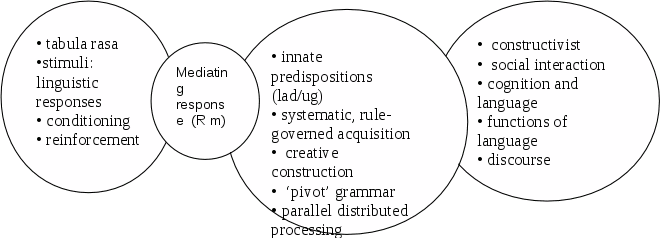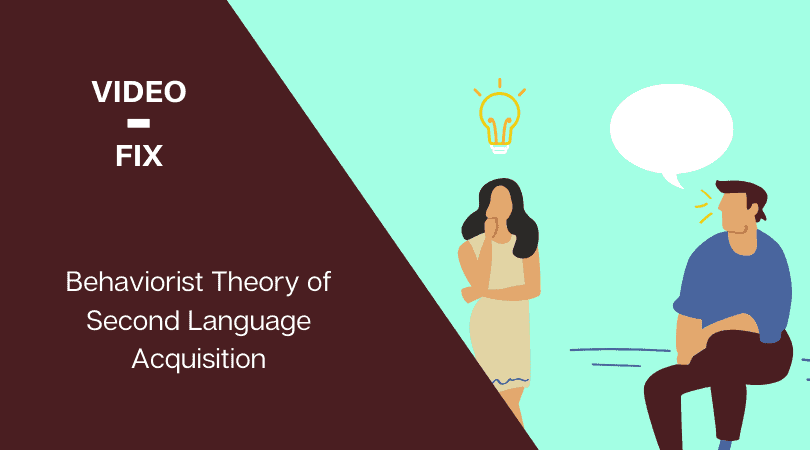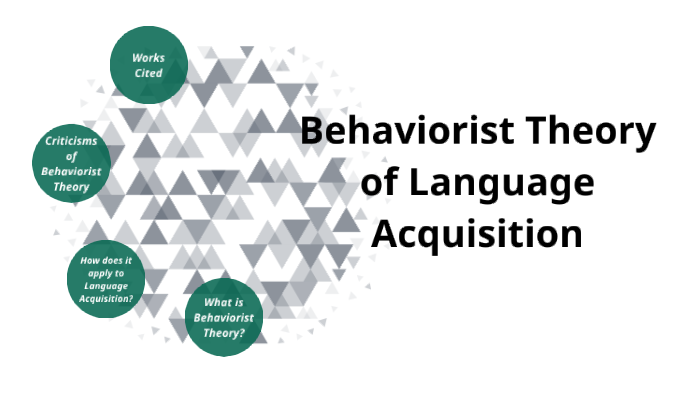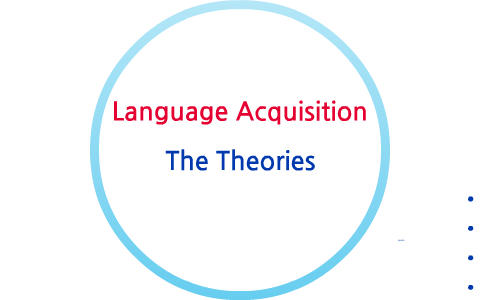Behaviorist language acquisition refers to the idea that language is learned through the process of conditioning and reinforcement, rather than being innate or hardwired into the human brain. This perspective on language learning was first proposed by psychologist B.F. Skinner in the 1950s and has had a significant influence on our understanding of how children learn language.
According to the behaviorist perspective, language is learned through a process called operant conditioning, which is a type of learning that occurs when an animal or human learns to associate a particular behavior with a particular consequence. In the case of language acquisition, this means that children learn to associate certain sounds or words with certain objects or actions. For example, a child may learn to say "dog" when they see a dog, or "milk" when they want to drink milk.
One of the key tenets of behaviorist language acquisition is the idea that children learn language through reinforcement. When a child produces a sound or word that is recognized and reinforced by an adult, they are more likely to produce that sound or word again in the future. This reinforcement can take the form of positive reinforcement, such as praise or rewards, or negative reinforcement, such as the removal of an unpleasant stimulus.
One of the criticisms of the behaviorist perspective on language acquisition is that it does not adequately explain how children are able to learn and use grammar and syntax, which are more complex aspects of language. While the behaviorist perspective can explain how children learn to associate certain sounds with certain objects or actions, it does not address how children are able to put these sounds together in a meaningful way to form sentences and communicate more complex ideas.
Despite these criticisms, the behaviorist perspective on language acquisition has had a significant influence on our understanding of how children learn language and has led to the development of various teaching methods and approaches that are based on the principles of operant conditioning and reinforcement. These methods have been widely used in education and have been shown to be effective in helping children learn language and other skills.
Overall, the behaviorist perspective on language acquisition suggests that language is learned through the process of conditioning and reinforcement, rather than being innate or hardwired into the human brain. While this perspective has been influential and has led to the development of effective teaching methods, it does not fully explain all aspects of language learning and has been criticized for its limitations.
BEHAVIORIST THEORY ON LANGUAGE LEARNING AND blog.sigma-systems.com

Since the late 1990s and throughout the twenty-first century, early ABA interventions have also been identified as the treatment of choice by the intensive behavioral intervention—is the traditional EBI technique implemented for thirty to forty hours per week that instructs a child to sit in a chair, imitate fine and gross motor behaviors, as well as learn eye contact and speech, which are taught through A related term for incidental teaching, called Journal of Organizational Behavior Management, which was rated the third-highest impact journal in applied psychology by ISI JOBM rating. Journal of Applied Behavior Analysis. Leaning native language growth offers a way for the growth of foreign language growth. Behavior therapy techniques: a guide to the treatment of neuroses. On being visited by the vita police: A reply to Corrigan. The presence of food made the dog salivate.
Behaviourist Theory of Language Acquisition

A developing branch of linguistics which studies the biological preconditions for language development and use in human beings, from the viewpoints of both the history of language in the race, and the development of language in the individual. During this research, which became known as classical conditioning, he made several important discoveries, which are still used to describe learning processes. Operant Conditioning, sometimes called Skinnerian training, is a type of behavior modification that relies on rewards and punishments as reinforcement for desired behaviors while discouraging undesired ones. Retrieved 10 January 2008. The theory states that we do not learn words and grammar because they are connected to meanings; instead, we have mental concepts of each word or concept. University of Buckingham Press. Retrieved 21 March 2021.
What is behaviorist theory in language acquisition?

Only recently have scientists such as Patricia Kuhl start to understand how a newborn brain processes and learns language. For this reason, today the cognitive-behavioral model is proposed, which unites the cognitive branch thought with. Journal of Contextual Behavioral Science, Volume 6, Issue 2, Pages 152-158. Behaviourism was established as an alternative to introspective methods of understanding psychological processes involved in learning. However, many writers in language, psychology, and linguistics are now saying that language is much more complex than had been previously supposed. A common example of operant conditioning is training a dog to sit by rewarding it with food when they sit. Although conventions matter, children make things up: they learn as they act with expression.






